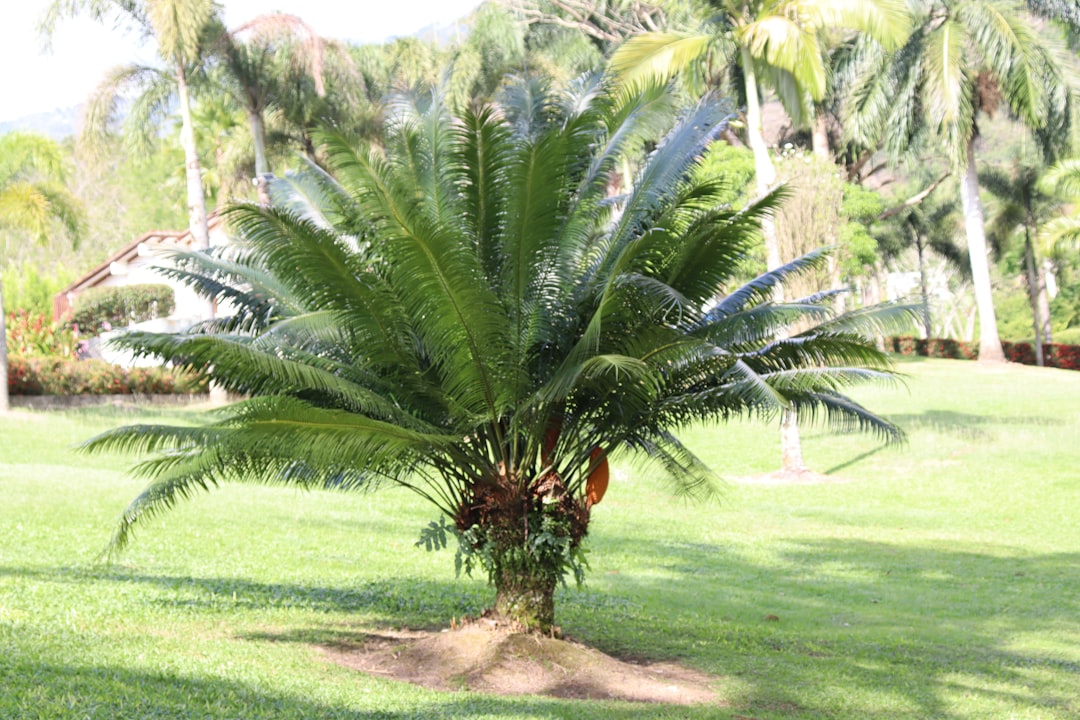The Marvel of the Coconut Palm in Gardening

The coconut palm, a true icon in the realm of palm trees, stands out as one of the most recognizable botanical wonders across the globe. Its distinct appearance and remarkable adaptability make it a fascinating subject for gardeners and nature enthusiasts alike.
One of the most notable features of the coconut palm is its exceptional drought - tolerance. In regions where water is scarce, this tree can thrive, relying on its deep - rooted system to access water sources deep within the soil. This characteristic allows it to survive in arid and semi - arid environments, where many other plants would wither away. For example, in certain coastal areas of Africa and Australia, coconut palms can be seen growing vigorously despite long periods of little to no rainfall. It has evolved over time to conserve water efficiently, with its long, slender fronds reducing the surface area exposed to the sun and minimizing water loss through transpiration.
Another remarkable aspect of the coconut palm is its ability to withstand salty soils. Coastal regions are often characterized by high salt content in the soil due to the proximity to the ocean. The coconut palm has developed a unique mechanism to deal with this issue. Specialized cells in its roots can filter out a significant amount of salt, preventing it from entering the plant's vascular system. This adaptation enables the tree to grow along shorelines, where the soil is saturated with salt. In fact, coconut palms are commonly found lining the beaches of tropical islands, adding to the idyllic scenery.
The coconut palm is also well - known for its fruit production. Coconuts grow in clusters, hanging from the branches of the tree. These fruits are not only a valuable source of food but also have numerous other uses. The flesh of the coconut can be eaten fresh, used in cooking, or processed into coconut milk and oil. Coconut milk is a staple ingredient in many tropical cuisines, adding a rich and creamy flavor to dishes. Coconut oil, on the other hand, has gained popularity in recent years for its health benefits and is used in cooking, skincare, and haircare products.
From a gardening perspective, the coconut palm can be a great addition to a landscape. However, it does require specific growing conditions. It thrives in full sunlight, so it should be planted in an area where it can receive at least six to eight hours of direct sunlight per day. The soil should be well - drained, as the tree does not tolerate waterlogged conditions. Although it can tolerate salty soils, it still prefers a soil that is rich in organic matter. When planting a coconut palm, it is important to provide enough space for it to grow, as it can reach heights of up to 100 feet and has a wide canopy.
Propagation of coconut palms is typically done through seeds. The coconuts themselves are the seeds, and they need to be planted in a suitable growing medium. It can take several months for the seed to germinate, and during this time, it is important to keep the soil moist but not overly wet. Once the seedling has emerged, it should be gradually acclimated to outdoor conditions if it was started indoors.
In addition to its practical uses and aesthetic appeal, the coconut palm also plays an important ecological role. It provides habitat and food for a variety of animals. Birds often build their nests in the fronds of the tree, and monkeys and other small mammals feed on the coconuts. The fallen fronds and husks of the coconuts also contribute to the nutrient cycle in the ecosystem, decomposing and enriching the soil.
Overall, the coconut palm is a remarkable tree that combines beauty, adaptability, and utility. Whether you are a professional gardener looking to add a tropical touch to a landscape or simply someone who appreciates the wonders of nature, the coconut palm is a plant that deserves admiration and study.